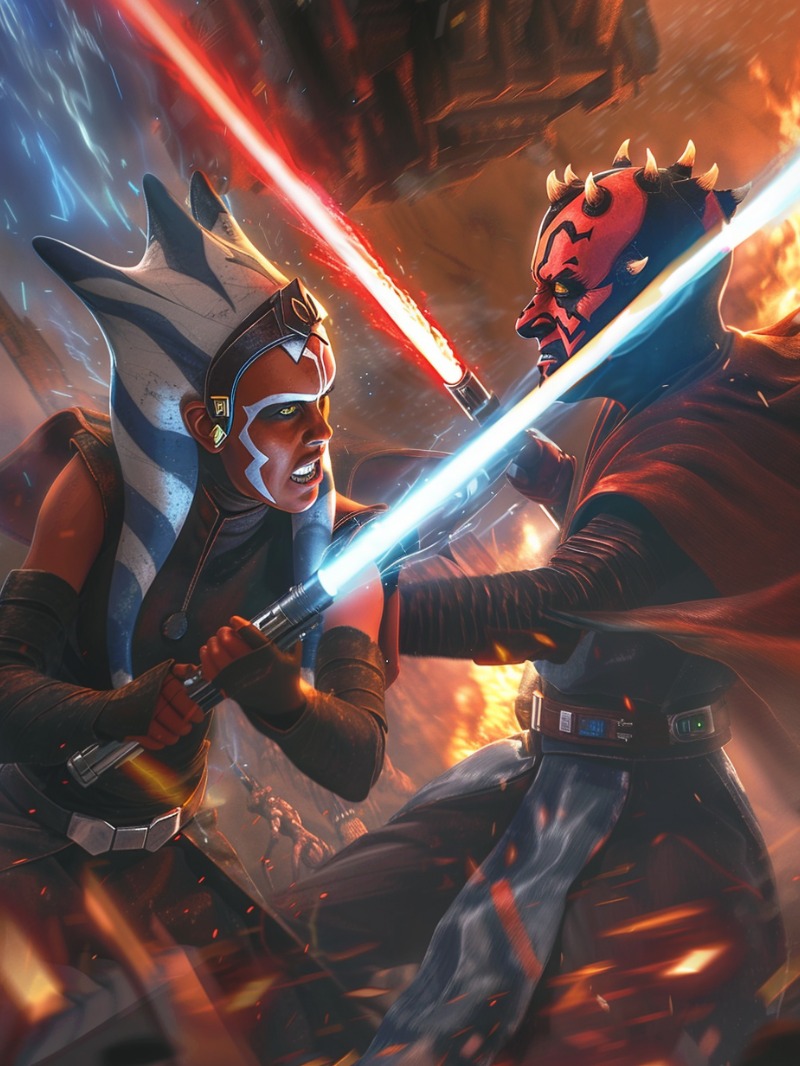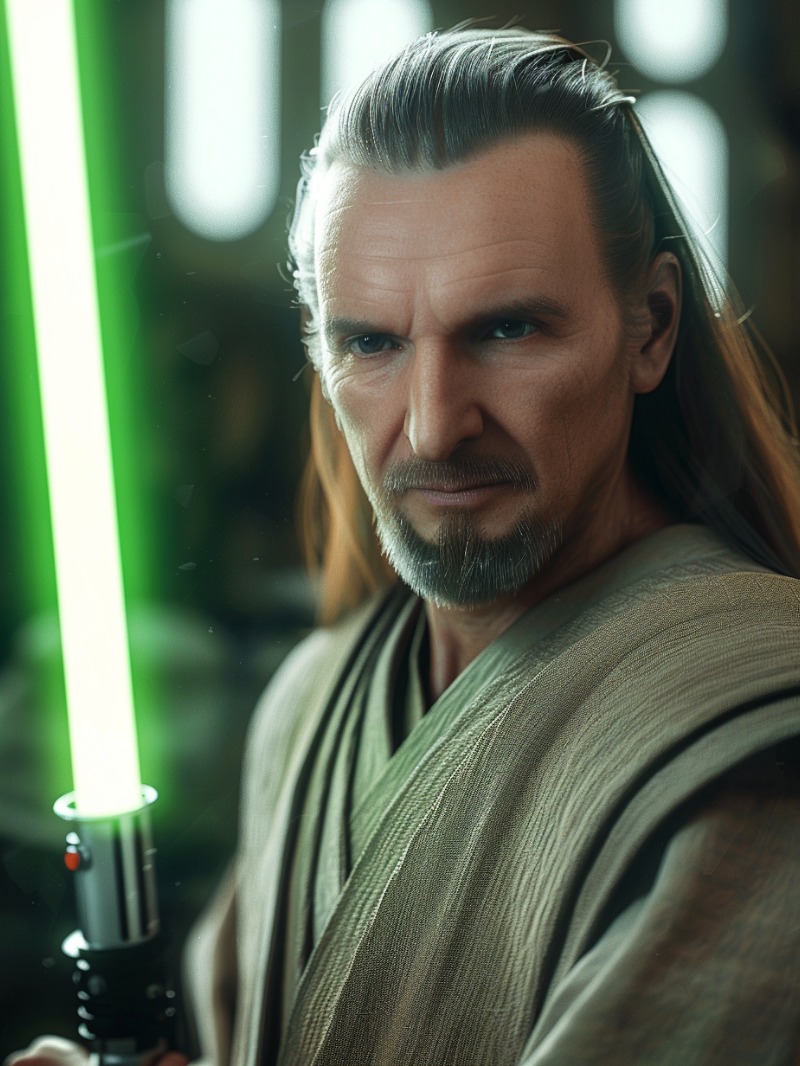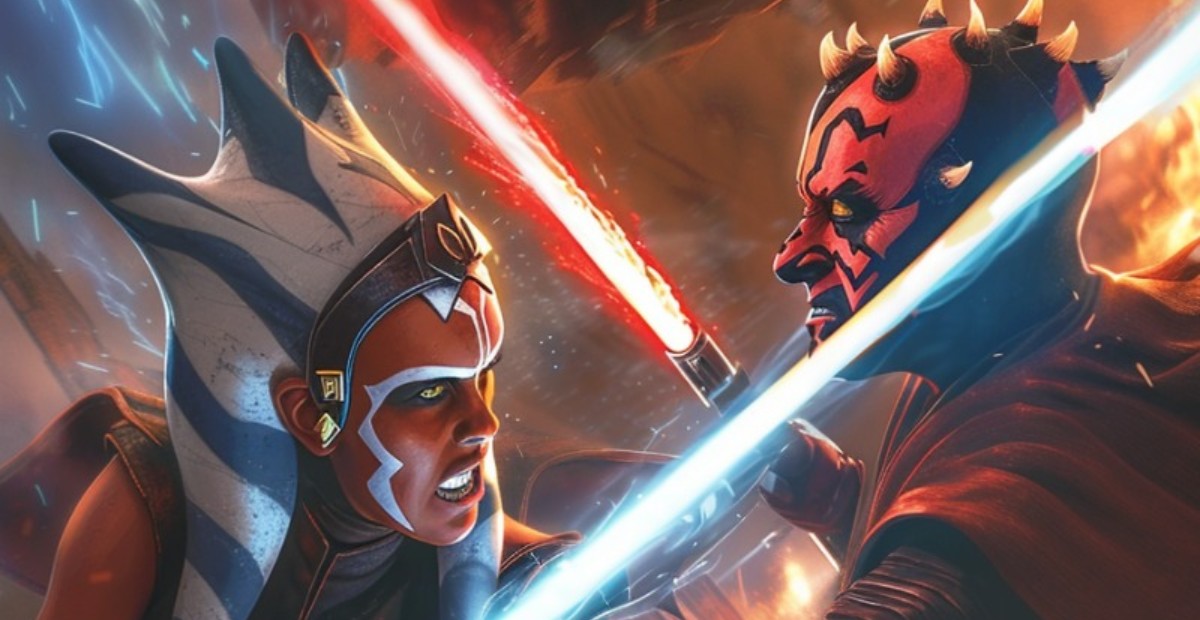In the vast galaxy of “Star Wars,” there are lightsaber battles that go down in history, and then there are duels that make you stop and think, “Wait, how did that just happen?”.
One such head-scratcher is why Ahsoka Tano could defeat the menacing Darth Maul in “The Clone Wars,” while the wise and powerful Qui-Gon Jinn could not in “The Phantom Menace.”
So, grab your lightsabers (or just your popcorn), and let’s dive into this galactic puzzle!
Table of Contents
The Background: Lightsabers at the Ready
First up, let’s set the stage for these epic showdowns. Qui-Gon Jinn, who could be the Jedi version of your cool uncle with a particular set of skills, faces off against Darth Maul during the battle of Naboo in “The Phantom Menace.”
Despite his Jedi skills and flowing hair that would make even a shampoo commercial jealous, Qui-Gon ends up on the losing side, leaving fans everywhere a bit teary-eyed.
Fast forward to “The Clone Wars,” Season 7, Episode 10, where Ahsoka Tano, a former Jedi padawan turned galactic wanderer, clashes with Maul on Mandalore.
Spoiler alert: she wins! But how does Ahsoka succeed where Qui-Gon failed? Let’s break it down.

Comparative Analysis
In the swirling cosmos of Jedi battles and lightsaber clashes, the differing outcomes of Ahsoka Tano and Qui-Gon Jinn’s duels with Darth Maul offer a fascinating study.
Here’s a deeper look at why Ahsoka might have succeeded where Qui-Gon did not, considering their backgrounds, training, and circumstances.
1. Combat Styles and Experience
Qui-Gon was indeed a Jedi of the old school, much more a philosopher-warrior than a mere combatant.
His style, rooted in the Ataru form of lightsaber combat, involves a lot of acrobatics and wide, sweeping moves. However, this form can be limiting in tight spaces—a notable disadvantage in his final fight in the narrow confines of the Theed power generator.
Moreover, Qui-Gon’s era was relatively peaceful compared to the Clone Wars. He spent much of his time in meditation and negotiation, not in active combat.
His duel with Maul was one of the first real lightsaber battles against a Sith in a thousand years, catching him at a disadvantage due to the lack of practical experience against such a deadly and unconventional foe.

Ahsoka Tano: Trained during one of the most tumultuous periods in the Galactic Republic’s history, Ahsoka’s combat skills were honed in a far more hostile and dynamic environment.
Under Anakin Skywalker’s tutelage, she learned to be resourceful and adapt quickly to different combat scenarios, traits that served her well against Maul.
Ahsoka’s training was less about meditation and more about practical, kinetic fighting, preparing her exceptionally well for direct combat.
Ahsoka’s experience included engagements with formidable foes like General Grievous and Asajj Ventress, which further sharpened her abilities.
These encounters with some of the galaxy’s deadliest fighters provided her with invaluable practical experience that Qui-Gon simply did not have.

2. Strategic and Psychological Factors
Qui-Gon, while a formidable force user, faced Maul without any prior experience fighting Sith warriors, who had been thought extinct for millennia.
This lack of preparation is a critical factor; Qui-Gon’s only encounter with Maul before their fatal duel was brief and ended with him fleeing to warn the Naboo of the Sith’s return.
Additionally, his age and the physical demand of his combat style likely contributed to his fatigue in the prolonged duel.

In contrast, Ahsoka’s entire Jedi career unfolded during the Clone Wars, where she grew accustomed to the chaos and ruthlessness of war.
She was battle-hardened and strategic, qualities necessary for surviving and thriving as a general in the Grand Army of the Republic. Her agility and dual-wielding technique made her a formidable opponent in one-on-one combat.

3. Adaptation to Environment
The environmental factor also played a significant role. Qui-Gon was forced to fight in a space that did not suit his fighting style, which relies on mobility and space.
Ahsoka, on the other hand, managed to turn her environment to her advantage during her duel with Maul, using the terrain of Mandalore to help neutralize some of Maul’s strengths (As you saw at the end of the duel).
Wrap it up
In essence, Ahsoka’s victory over Maul was not just a testament to her skill but also a reflection of her era’s demands: a time when Jedi were required to be as adept with their lightsabers as they were with their minds.
Qui-Gon, for all his strength and wisdom, was a product of a more peaceful age, less suited to the ferocity and cunning of a Sith like Maul in direct combat.

